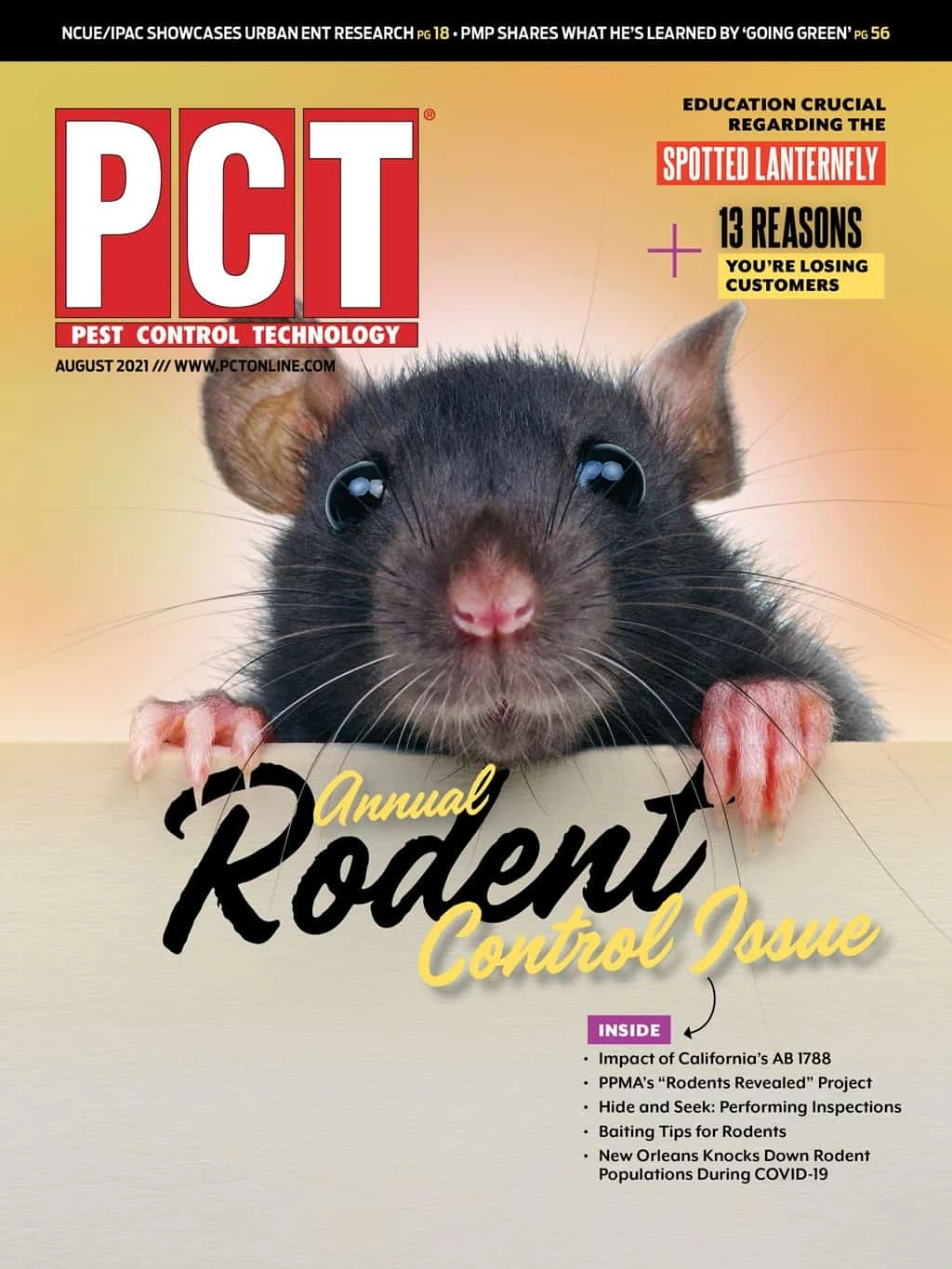I was on a call the other day with someone who asked what the “hottest” pest is right now. “What are your readers most interested in hearing about?” she asked.
It’s an interesting question since there’s so much going on in the industry currently. And, there are so many ways to measure such an inquiry. (More on that later.)
At first blush, it’s easy to say that since virtually 100 percent of our readers perform ant and cockroach work, the bread and butter of their business, if you will, that those insects would be most top of mind and of greatest interest. They bring in the most revenue, so, it follows that our readers would want to know everything about them. New species, new products, new treatment techniques…everything.
But through the pandemic lens, as the nation stayed home during the past 18 months, pests that disturbed people’s “backyard” lives frequently made the phones ring for PMPs. Pests like mosquitoes and ticks — it’s not a coincidence that they also are at the top of the “public health” awareness list — affected how people could enjoy their outdoor space. So, one could argue that those bloodsuckers are perhaps the “pests du jour.”
Is there still another way to answer this question? I think so. Pre-COVID (how long are we going to say that?), my answer probably would have been bed bugs. Since they showed up (again) about 20 years ago, they’ve never left. And of all the products developed for the professional market in that time, there seem to be more bed bug products than any other. Although they weren’t making the most daily headlines, they were everywhere and combined with their “creepiness” factor, they were many customers’ biggest concern.
Don’t forget about rodents. During COVID, these vertebrate pests made national news, especially at the beginning of stay-at-home orders. They missed humans (well, our food and our trash) so they had to seek resources elsewhere, and in the process created lots of new problems (see page 46 for additional insights).
But even before COVID, much like ants and cockroaches, rodents were and are pests you can set your watch by as far as calls from customers. They are a public health pest to be sure, and regardless of the season, they are everywhere — commercial and residential accounts, indoors and out. And virtually all PMPs provide rodent control (93 percent, according to our upcoming State of the Rodent Market report).
Electronic rodent monitoring — perhaps the newest product category in the industry — was designed specifically for vertebrate pests. It’s been a while since an entirely new category of treatment products has come along, so when multiple manufacturers are developing such products, it surely means there’s a market need. Suffice it to say, anecdotally and from a product introduction perspective, there are lots of things going on with rodents as well.
But what about real data? Facts and figures. Not opinions from editors at their desks?
The Professional Pest Management Alliance has us covered. PPMA teamed up with an artificial intelligence partner to use live surveys to continuously monitor online consumer conversations surrounding pests to help glean patterns and top concerns among Americans.They monitor broad pest-related topics and niche topics to help identify seasonal highlights.
PPMA’s June findings, in part, showed what you’d think about this time of year: With high temperatures and increased moisture across much of the country, mosquitoes saw the highest increase in engagement out of any other core pest in June at 110 percent. Ticks saw the second-highest increase in engagement at 32 percent.
But here’s where it gets interesting. While mice showed an increase of 10 percent in online discussions, the topic of rats increased in both North Carolina and Oregon at 4,041 percent and 867 percent, respectively. Huh? I haven’t been to Oregon or North Carolina lately, and I got a D in business statistics in college, so I would love for some PMPs in those areas to talk to us about what is going on in their areas to explain those unusual numbers.
Want to know more? PPMA shares this data with its contributors every month on its website (https://www.ppmamainframe.org). I encourage you to check it out. And upon review of PPMA’s data, I think you’ll find that yes, all pests (and their data) are local.

Explore the August 2021 Issue
Check out more from this issue and find your next story to read.
Latest from Pest Control Technology
- SiteOne Hires Dan Carrothers as Vice President of Agronomic Business Development
- U.S. Structural Pest Control Market Grew Nearly 8% in 2024, Specialty Consultants Reports
- Hands United Foundation Supports PMPs in Hardship Through Financial Relief
- Proven Pest Exclusion Solutions
- Who is Liphatech?
- Stick With Quality: How Private Label Glue Traps Can Strengthen Your Brand
- Marketing as Effective as Your Treatments: How Modern Marketing Fuels Pest Control with Scorpion
- PPMA's Jim Fredericks Reviews Latest Pest Weather Forecast Findings







